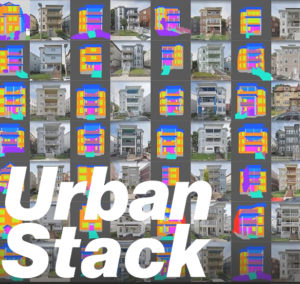














Participating Research Units
Biomineralization and Biomimetics Lab
Joanna Aizenberg’s lab and research are aimed at understanding some of the basic principles of biological architectures and the economy with which biology solves complex problems in the design of multifunctional, adaptive materials. The goal is to use biological principles as guidance in developing new, bio-inspired synthetic routes and nanofabrication strategies that would lead to advanced materials and devices, with broad impact in fields ranging from architecture to energy efficiency to medicine. The lab pursues a wide range of research interests that include adaptive materials, biomineralization, surface science and self-cleaning materials, bio-inspired optics, self-assembly, nanofabrication, and bio-nano interfaces. Dr. Aizenberg is one of the pioneers of this rapidly developing field of bioinspired materials design. The lab pursues a wide range of research interests that include biomineralization, self-assembly, adaptive materials, crystal engineering, surface wettability, nanofabrication, biooptics, biomaterials, and biomechanics.
 The Material Processes and Systems Group (MaP+S)
The Material Processes and Systems Group (MaP+S)
The MaP+S Group is a research unit that takes materials as a starting point for a broad set of research investigations that involve computation, robotics, and material science. MaP+S advances the aesthetic and functional agenda of materials in the built environment. The group evolved from the previously established Design Robotics Group, also at the Harvard Graduate School of Design. MaP+S looks at materiality as starting points for design research, with a special interest in robotic and computer-numerically controlled (CNC) fabrication processes, as well as small-scale work on nano materials. Much of the lab’s current work studies ceramic material systems and design robotics. MaP+S also jointly runs the Adaptive Living Environments (ALivE) project with Harvard’s REAL group and Prof. Allen Sayegh. MaP+S works on funded research and other projects and supports thesis research on the masters and doctoral level.
 Responsive Environments and Artifacts (REAL)
Responsive Environments and Artifacts (REAL)
REAL is a research lab that pursues the design of digital, virtual, and physical worlds as an indivisible whole. It recognizes the all-pervasive nature of digital information and interaction at scales ranging from our bodies to the larger urban contexts we occupy and the infrastructures that support them. REAL takes an interdisciplinary look at the design of the built environment from the lens of technologically augmented experiences, with a strong focus on the sustainability and longevity of technology. Putting the human being at the center and forefront, from the micro (bodily sensors, smart product design, augmented interfaces) to the macro (interactive buildings, information infrastructures, communication frameworks), researchers at REAL examine the emerging ways in which technology fuses into the ways we live, work, and play.
 The Geometry Lab
The Geometry Lab
The Geometry Lab researches the intersection of design and the science of shape and form, aided by computational tools and design intuition. The Lab combines computational, formal, architectural, and historical research in a heterogeneous yet synthetic agenda. The objectives of the lab are to produce and disseminate new knowledge, to generate broad, scalable solutions to big problems, and to explore the associated cultural and human implications.
 Urban Stack
Urban Stack
The Urban Stack is a pedagogical framework for understanding the infrastructures of power that operate in relationship to practice. These elements shape the design and production of the built environment in a time of increasing uncertainty, project complexity, and risk. As a research unit, the Urban Stack lab explores the impact and opportunities presented by the emergence of scalable systems in the built environment, and is building and testing productive overlaps between the digital, social, and design processes that shape urban form and civic futures in 21st century urban places. The lab is developing technologies that embrace the complexity of social infrastructures and market dynamics to produce new modes of design practice. The persistent and growing challenge of housing supply and quality is a primary focus of current Urban Stack research.
